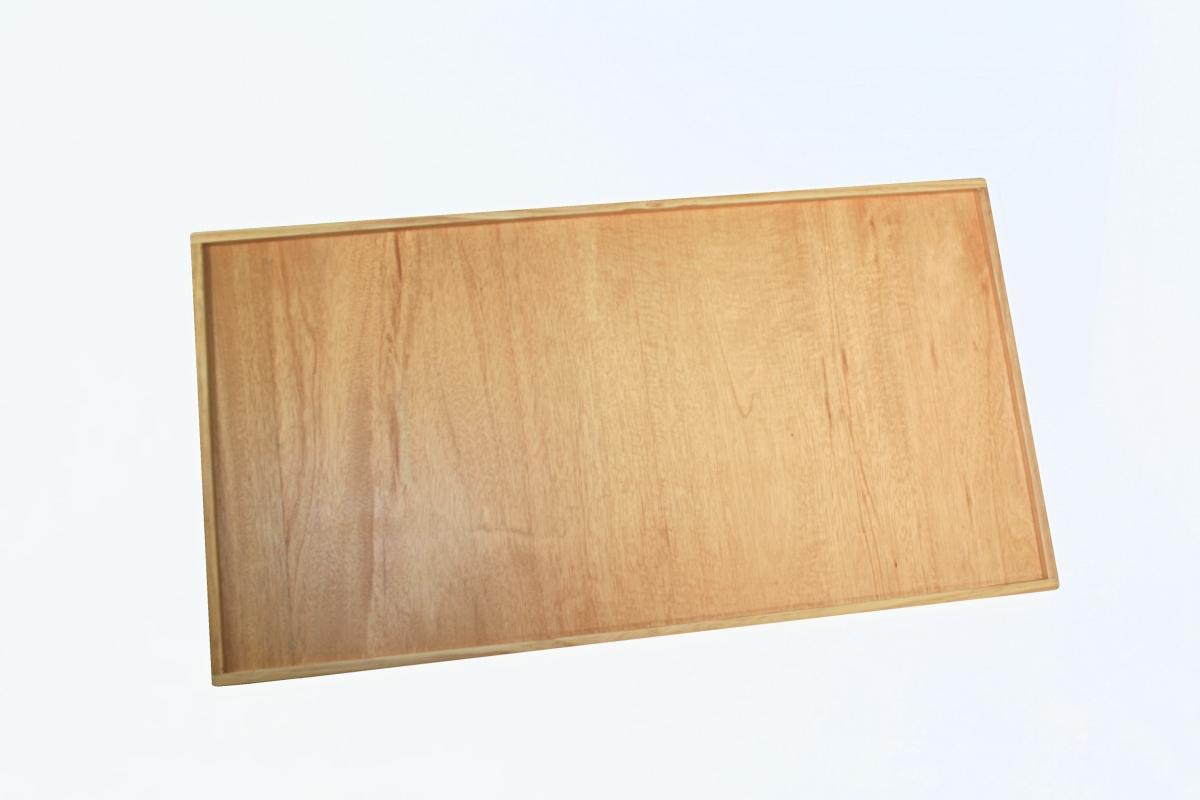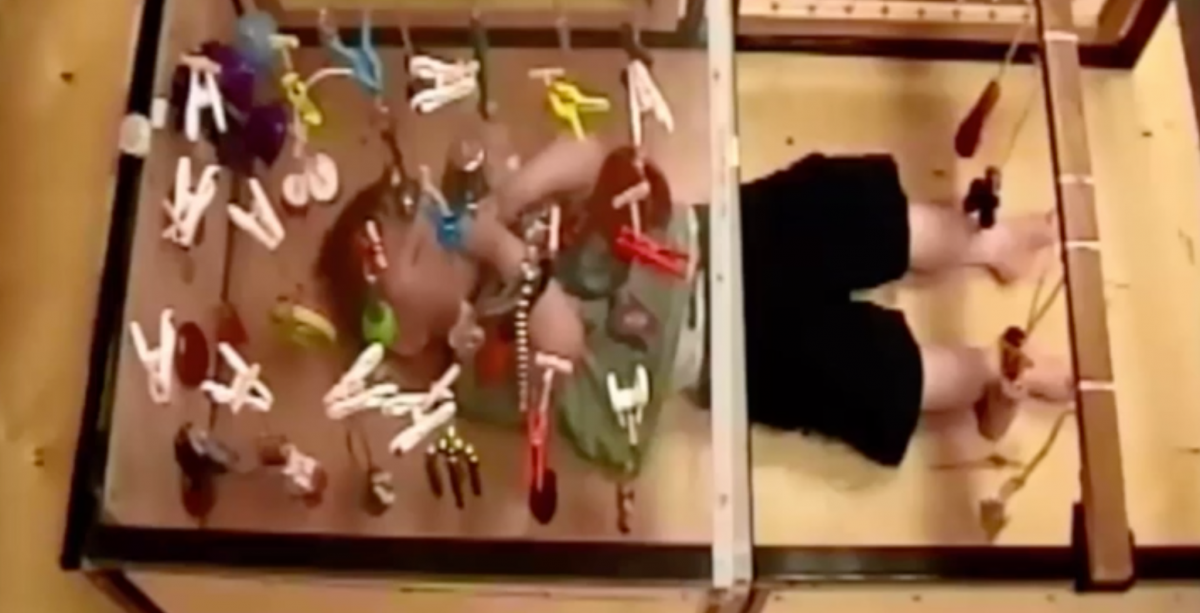The Remarkable Resonance Board
 One of the least flashy pieces of equipment or “perceptualizing aids” created by Dr. Lilli Nielsen is the Resonance Board. For all of its lack of flash, in my opinion it is one of the most valuable and versatile pieces of equipment ever designed for use with students who are visually impaired or deafblind. Constructed properly and made from cabinet-quality birch plywood on a raised wood trim, Resonance Boards are most useful when constructed in sizes 4'x4', 4'x6' and 4'x8'. Resonance Boards are available for purchase from Lilliworks.org, but can be hand-made as well using plans provided by Dr. Nielsen and available on the Active Learning Space website.
One of the least flashy pieces of equipment or “perceptualizing aids” created by Dr. Lilli Nielsen is the Resonance Board. For all of its lack of flash, in my opinion it is one of the most valuable and versatile pieces of equipment ever designed for use with students who are visually impaired or deafblind. Constructed properly and made from cabinet-quality birch plywood on a raised wood trim, Resonance Boards are most useful when constructed in sizes 4'x4', 4'x6' and 4'x8'. Resonance Boards are available for purchase from Lilliworks.org, but can be hand-made as well using plans provided by Dr. Nielsen and available on the Active Learning Space website.
Many people get help from the school industrial arts class, scouts, local woodworkers, and grandparents to build their own. Just make certain that “tool-time dads” and others stick with Dr. Nielsen’s design so they don’t over-engineer the board and lose the flexibility of the wooden surface which provides the auditory and tactile feedback.
For a piece of equipment that is so simple, there are so many things you can do with a Resonance Board!
Independent Play with Objects
Placing a child on a Resonance Board, while offering them a variety of objects for independent play, is a wonderful activity. The board will give the learner a reinforced stimulation every time he/she moves. Individuals with special needs require input through all of the senses. The Resonance Board provides both auditory and tactile feedback during which is typically very motivational to the child.
Let a child have plenty of opportunities each day to explore and experiment anyway he or she likes with objects while on the Resonance Board. Include things like vibrating toothbrushes, scalp massagers, foot massagers, rattles of all kinds, shiny things, things that make noise or bend, things that can be pulled apart and so forth. Use your imagination and some of Lilli’s ideas that are found in her book The Comprehending Hand to come up with a large collection of objects for the child’s activity.
It is important to pay attention to the type and quality of objects that interest the child during this type of play. Ask yourself what are the sensory pathways play with these objects stimulates. Does the child respond best to the visual, auditory, or tactile qualities? What about the smell or taste or temperature?
The video below shows a child exploring items using the Offering technique. Learn more about the Offering technique.
Used in Conjunction with other Perceptualizing Aids
The Resonance Board is also used in conjunction with the Little Room and Support Bench. Even though some people may feel it is too hard a surface for children to lay on, most children do not seem to find it at all uncomfortable. However, if a child has never experienced lying on a hard surface and only knows soft surfaces like his bed or stroller, it make take a little time for him to adjust to this difference.
It is best not to place cushions or wedges on the resonance board to keep the child from the surface because the tactile and auditory information will be drastically reduced. However, if the child cannot be safely positioned flat on the board due to respiratory or other medical conditions, they can be added. Learn more about Little Rooms.
The video below shows a young child using a Little Room on a Resonance Board.
For Learning Spatial Orientation and Searching
One of the big pluses about the Resonance Board is that anything the child drops on the Resonance Board should roll or slide back to him because his weight creates a depression. This makes it easier for the child to re-discover the objects set aside earlier in play.
A Resonance Board also creates a defined space for the child to begin to search for objects that have been set aside. This is a big plus in developing orientation skills and learning about spatial relationships. For example, a child set a favorite bowl by his feet on the board and would periodically return to that area to search with his hand until he could find it. He knew it was on the board because he could feel the board under his hands and if he moved his foot he could sometimes cause the bowl to make a sound.
Other Benefits
In his 2002 article, Resonance Boards, David Brown shares some additional benefits offered by the Resonance Board.
- A distractible and very active child who moves around the room a lot may choose to remain on the board because it is the place where all the interesting feedback happens, yet a very passive immobile child may become more active on the board because of the feedback it provides, and also because it has a smooth surface that reduces friction and makes sliding, bottom-shuffling, and back-scooting easier.
- A child with poorly coordinated movements might move less but move with more care and planning in order to produce specific feedback from the board, yet a passive and inactive child might be encouraged to move more because each arm or leg movement or turn of the head produces interesting feedback when he or she knocks the rocking toy, drags the metal chains draped across wrists or ankles, or just taps and kicks on the board directly.
- A very vocal child might be silent on the board in order to listen and attend, but a normally very silent child may vocalize in response to sounds and vibrations coming through the board.
- A child who does not normally use vision may look to see what is tapping or rocking on the board or may use vision to guide arm or leg movements to produce interesting feedback again.
- A child who dislikes using his or her hands to touch things might reach out to make sounds and vibrations happen again.
- Children who do not normally interact with other people in positive ways may attend, wait, look, touch, and take turns during tapping games on the board. Interactions with peers might be encouraged if children spend time together on the board.
- By traveling around the board in some way a child might discover the board’s edges and use touch or vision to explore them, thus expanding their understanding of space and boundaries.
- A child with a poor sense of space and direction may be helped by tapping games on the board, since the vibrations through the wood will provide extra information about where the taps are coming from and where the other person is located.
- Sometimes a child might decide, or be encouraged to decide, to get himself on or off the board, and this can provide interesting challenges to problem-solving abilities.
The Resonance Board is one thing that everyone starting out to use Active Learning approaches should have. It is lightweight and portable, easily stored, and easy to keep clean. Many different children can use the same board for a variety of different activities. So if you are not using a Resonance Board as part of your Active Learning strategies in your home or classroom, you should re-think the benefits of the humble Resonance Board.




Comments
Seeking information for students in Classroom
Resonance Board